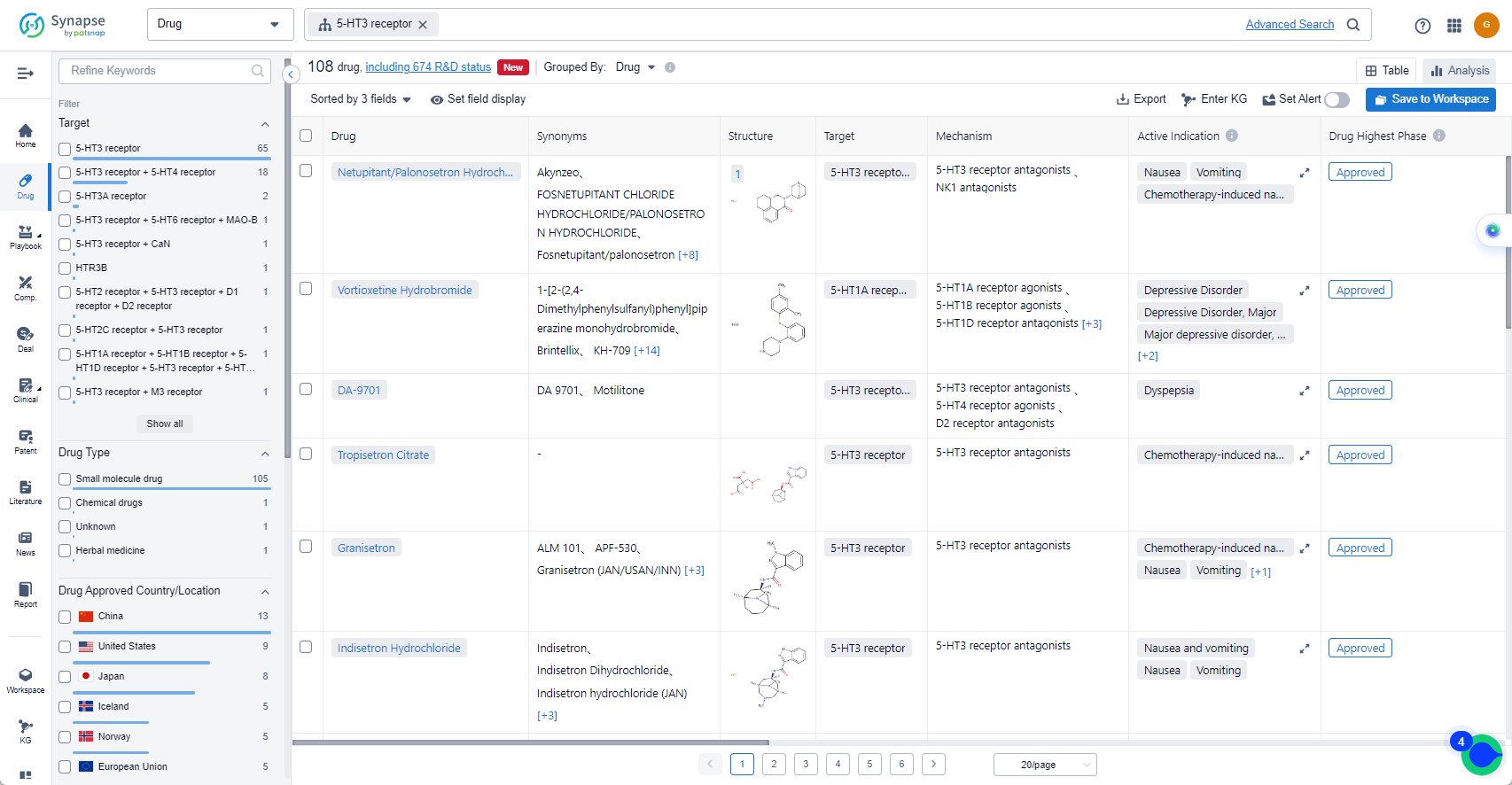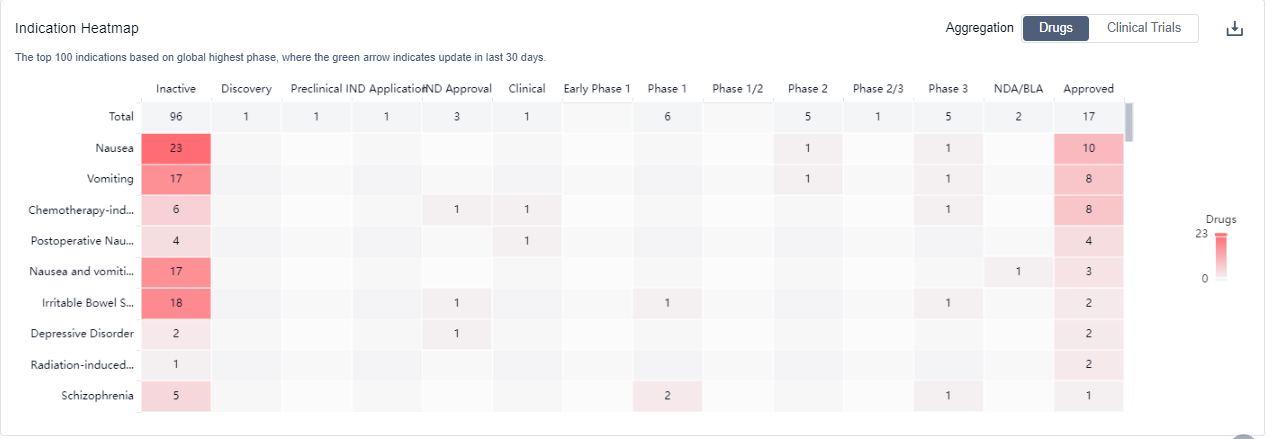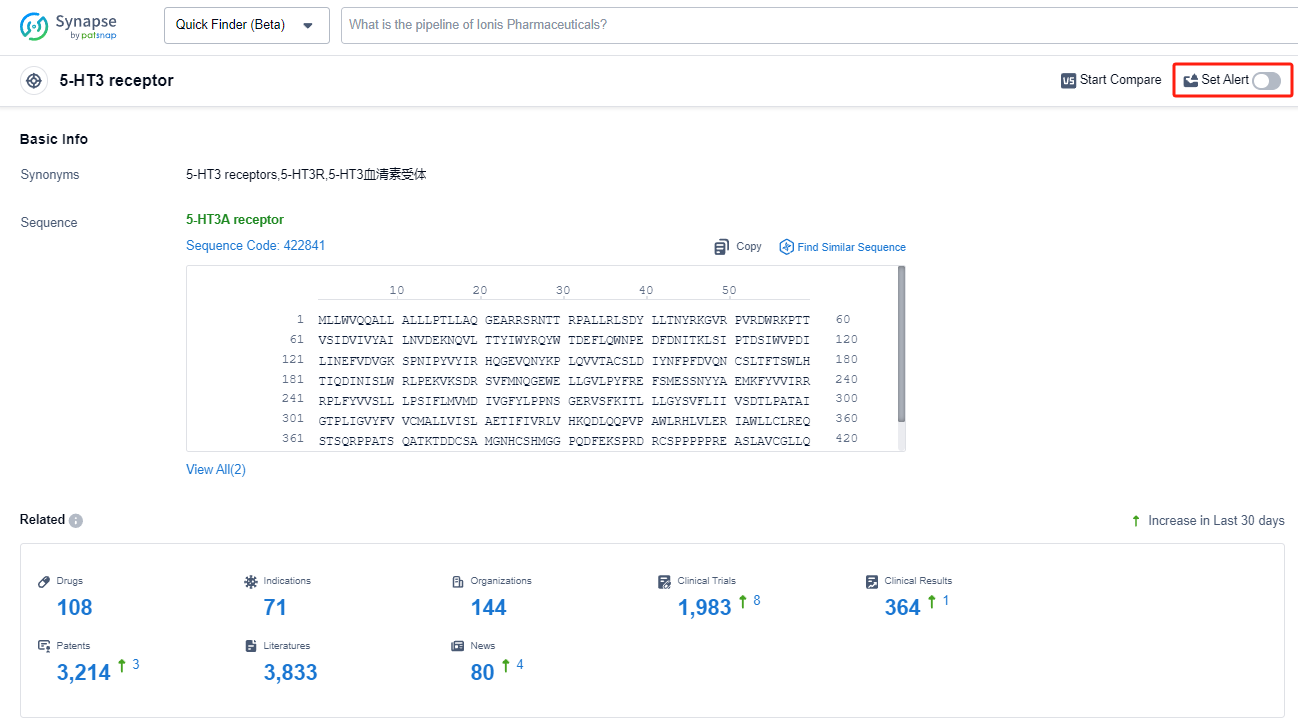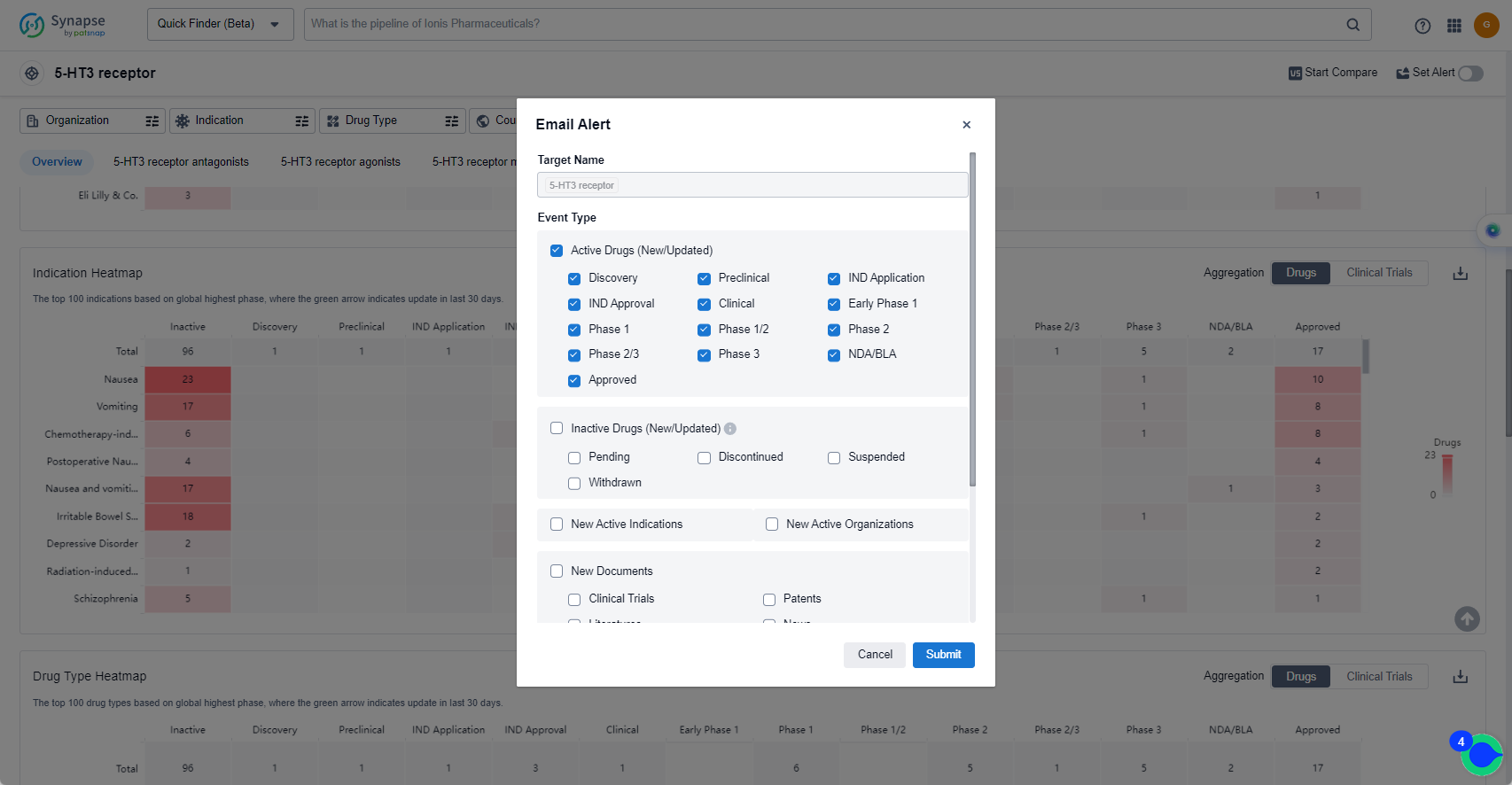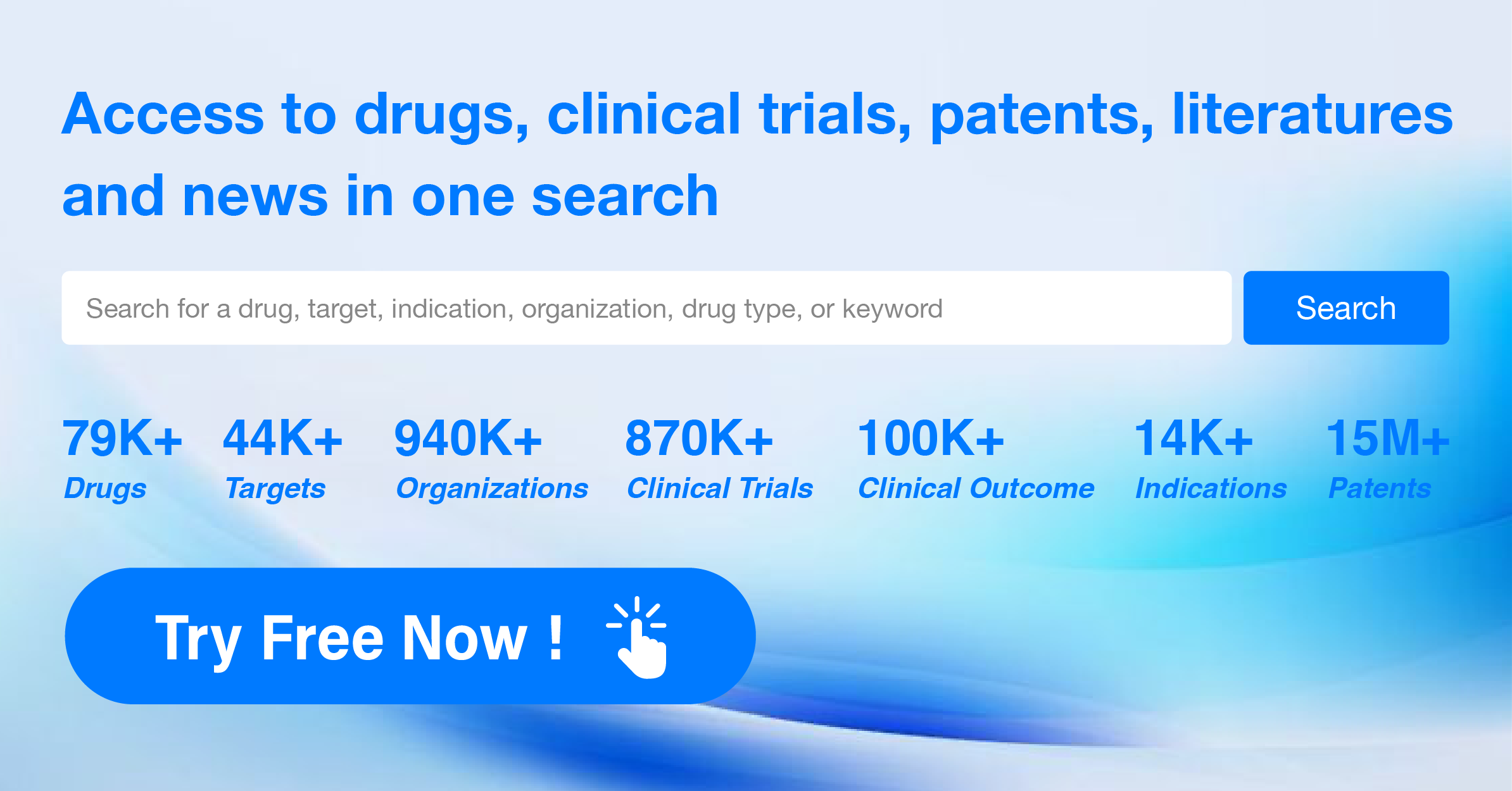Deciphering 5-HT3 receptor antagonists and Keeping Up with Their Recent Developments
The 5-HT3 receptor, also known as the serotonin receptor, plays a crucial role in the human body. It is primarily found in the central and peripheral nervous systems, particularly in the gastrointestinal tract and the brain. Activation of the 5-HT3 receptor by serotonin, a neurotransmitter, leads to various physiological responses such as regulating mood, appetite, and sleep. Additionally, this receptor is involved in the regulation of nausea and vomiting, making it a target for antiemetic drugs used in chemotherapy and postoperative settings. Understanding the role of the 5-HT3 receptor is essential for developing therapeutic interventions that can modulate its activity and potentially treat various disorders related to serotonin dysregulation.
5-HT3 receptor antagonists, also known as serotonin receptor antagonists or serotonin blockers, are a class of medicines used for the prevention and treatment of nausea and vomiting, particularly those caused by chemotherapy, radiation therapy, or postoperatively. The first 5-HT3 receptor antagonist, ondansetron, was developed by Glaxo around 1984 and its efficacy was first established in 1987. It was approved by the U.S. Food and Drug Administration in 1991.
The analysis of the target 5-HT3 receptor reveals a competitive landscape with multiple companies actively involved in the development of drugs. The highest stage of development is the approved phase, indicating successful clinical trials and regulatory approval. Drugs targeting the 5-HT3 receptor have been approved for various indications, with nausea being the most common indication. Small molecule drugs are progressing rapidly, indicating intense competition. China, the United States, and Japan are the leading countries in the development of drugs targeting the 5-HT3 receptor, with China showing significant progress. Overall, the target 5-HT3 receptor presents opportunities for further research and development in the pharmaceutical industry.
How do they work?
5-HT3 receptor antagonists are a class of drugs that block the action of serotonin on the 5-HT3 receptors in the central nervous system and peripheral tissues. Serotonin, also known as 5-hydroxytryptamine (5-HT), is a neurotransmitter that plays a role in various physiological functions, including mood regulation, gastrointestinal motility, and vomiting reflex.
From a biomedical perspective, 5-HT3 receptor antagonists are commonly used in the management of nausea and vomiting associated with chemotherapy, radiation therapy, and surgery. By blocking the activation of 5-HT3 receptors, these drugs help to reduce the signals that trigger the vomiting reflex, thus alleviating nausea and vomiting symptoms. Some examples of 5-HT3 receptor antagonists include ondansetron, granisetron, and palonosetron.
These drugs are typically administered orally or intravenously, and their use is well-established in clinical practice. They are considered effective and safe for the prevention and treatment of chemotherapy-induced and postoperative nausea and vomiting. However, like any medication, they may have potential side effects, such as headache, constipation, and dizziness.
In summary, 5-HT3 receptor antagonists are drugs that block the action of serotonin on specific receptors in the central nervous system and peripheral tissues. They are commonly used to manage nausea and vomiting associated with various medical treatments and surgeries.
List of 5-HT3 receptor Antagonists
The currently marketed 5-HT3 receptor antagonists include:
- Netupitant/Palonosetron Hydrochloride
- Vortioxetine Hydrobromide
- Tropisetron Citrate
- Granisetron
- Indisetron Hydrochloride
- Palonosetron hydrochloride
- Tropisetron Mesylate
- Alosetron Hydrochloride
- Dolasetron Mesylate
For more information, please click on the image below.
What are 5-HT3 receptor antagonists used for?
5-HT3 receptor antagonists are commonly used in the management of nausea and vomiting associated with chemotherapy, radiation therapy, and surgery. For more information, please click on the image below to log in and search.
How to obtain the latest development progress of 5-HT3 receptor antagonists?
In the Synapse database, you can keep abreast of the latest research and development advances of 5-HT3 receptor antagonists anywhere and anytime, daily or weekly, through the "Set Alert" function. Click on the image below to embark on a brand new journey of drug discovery!
